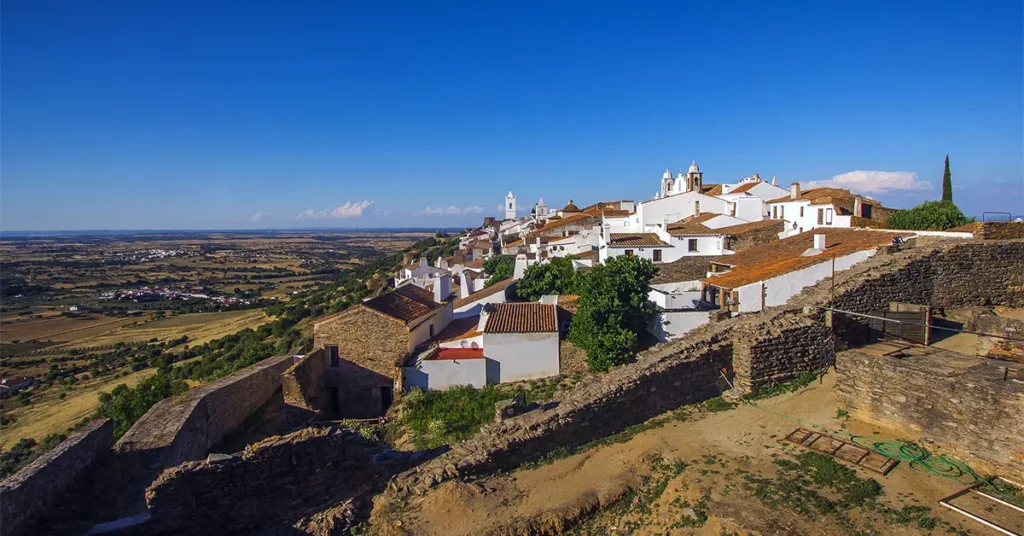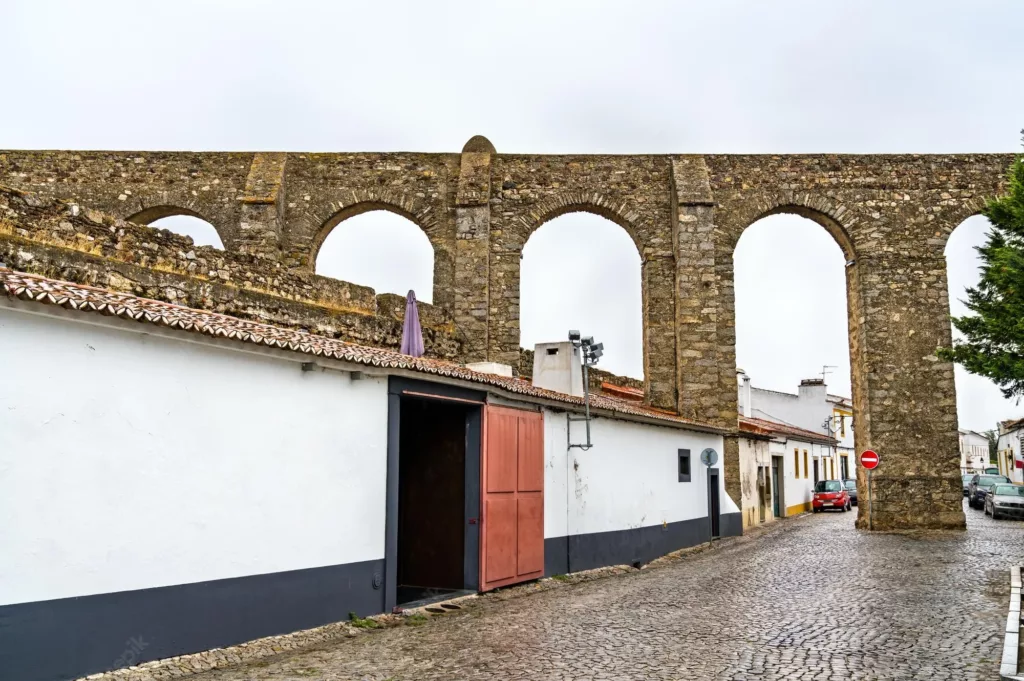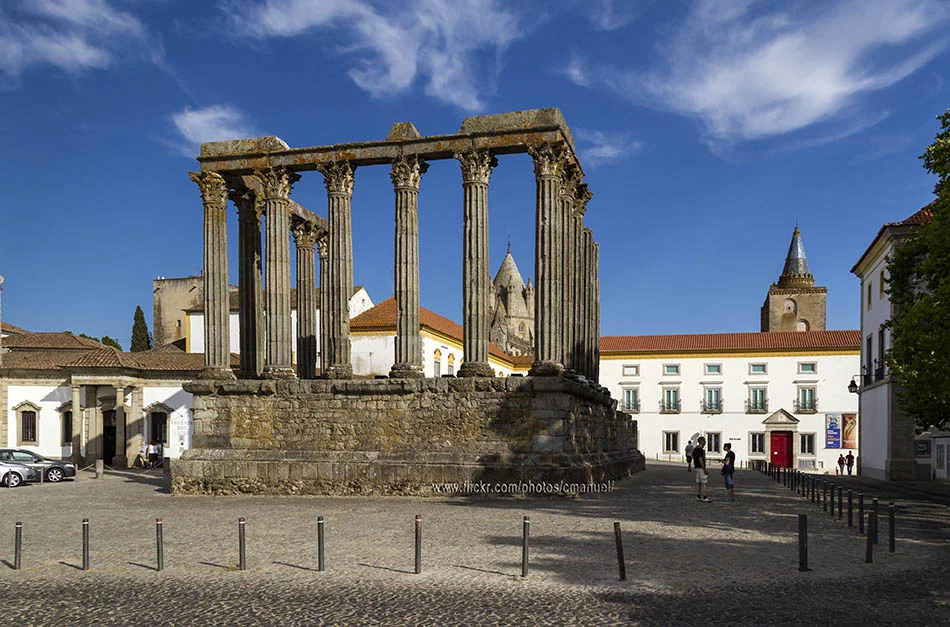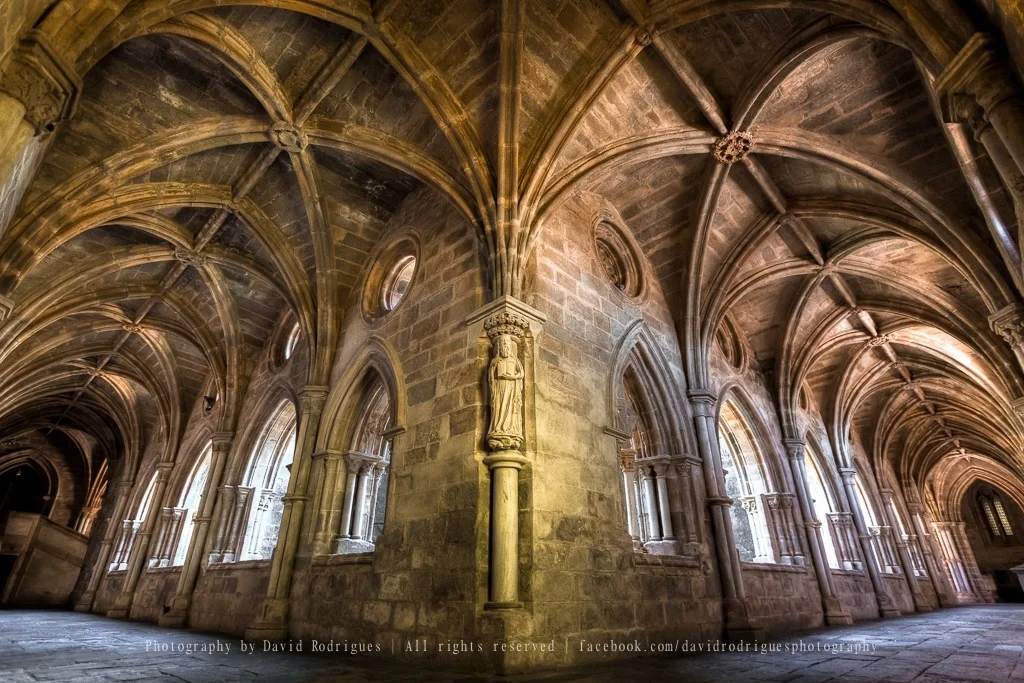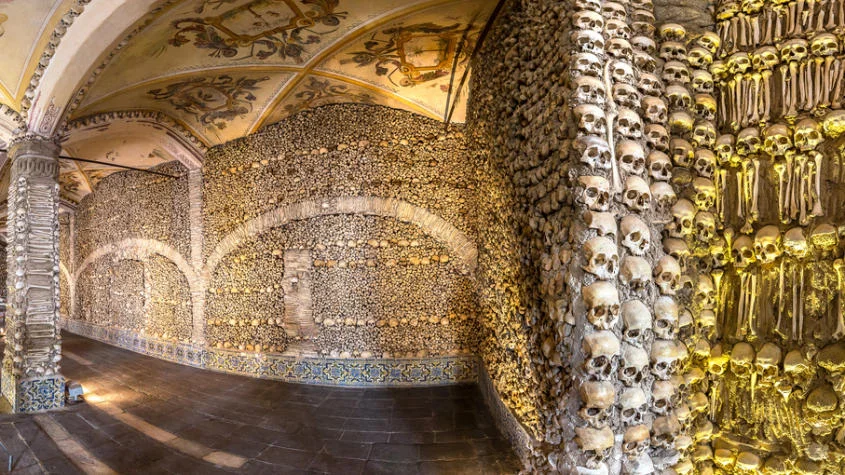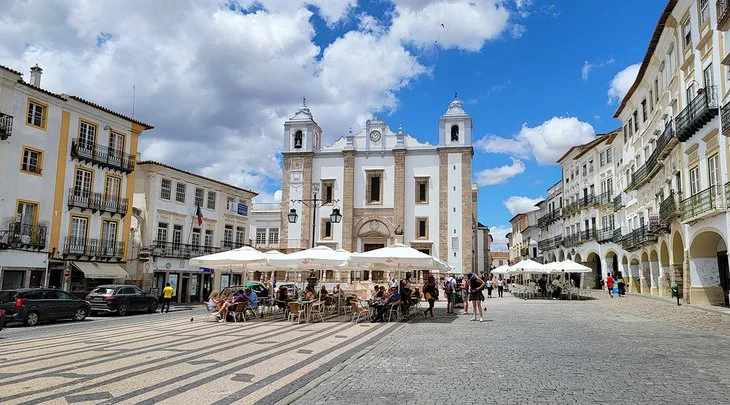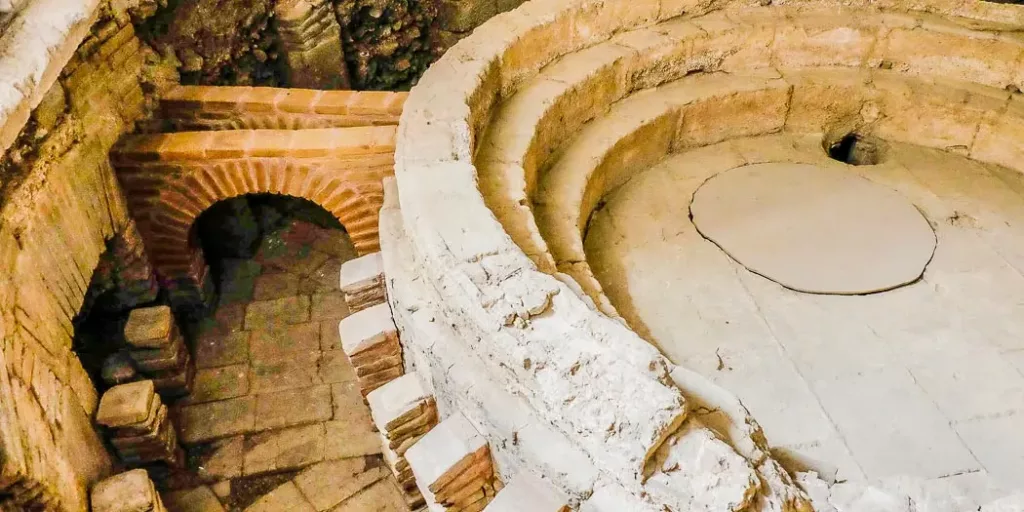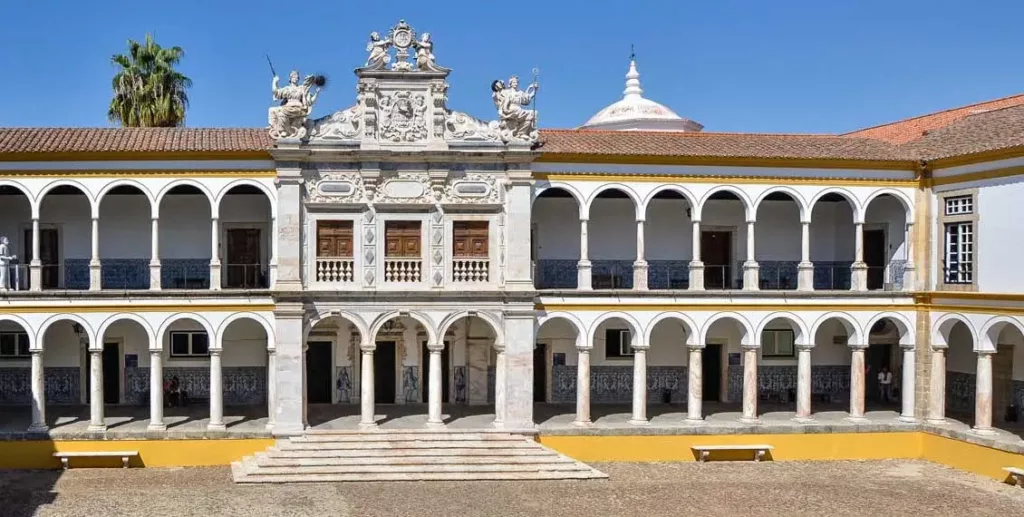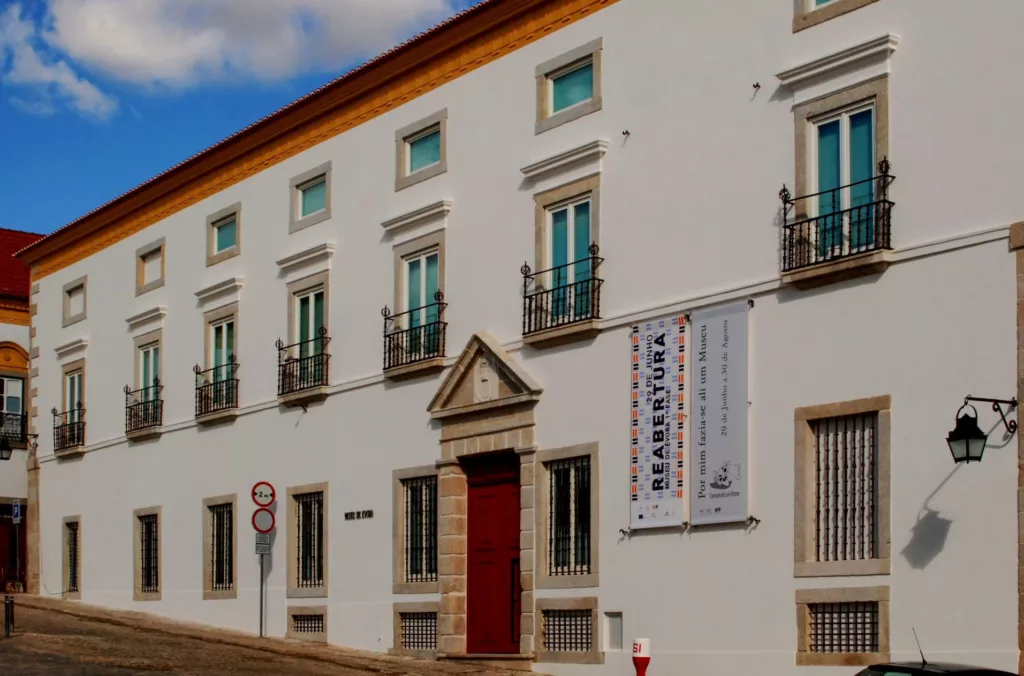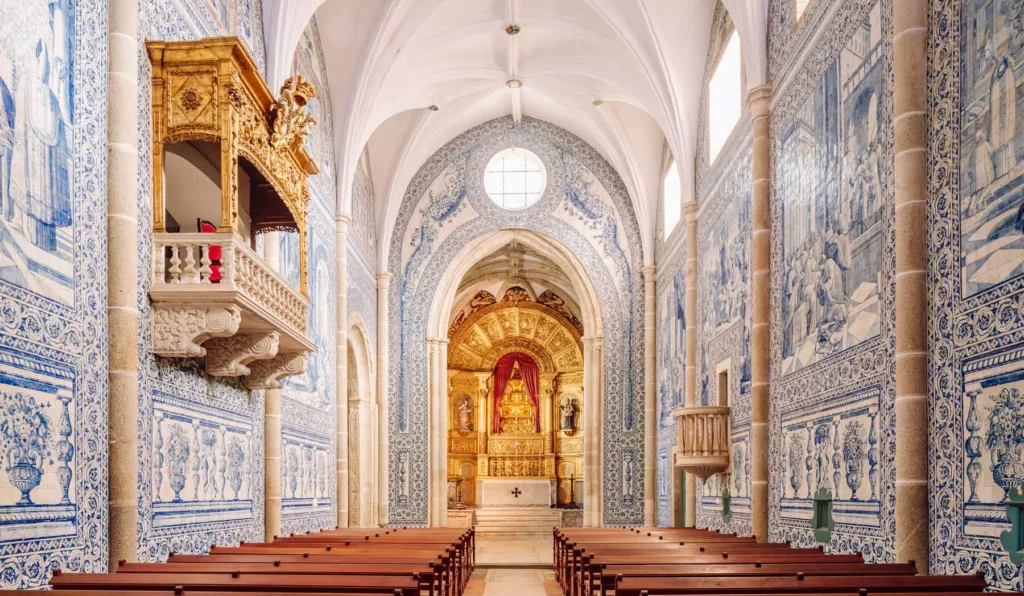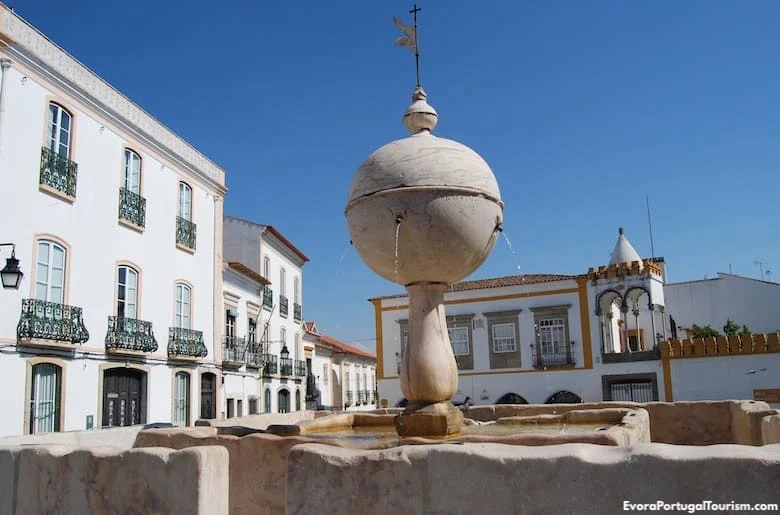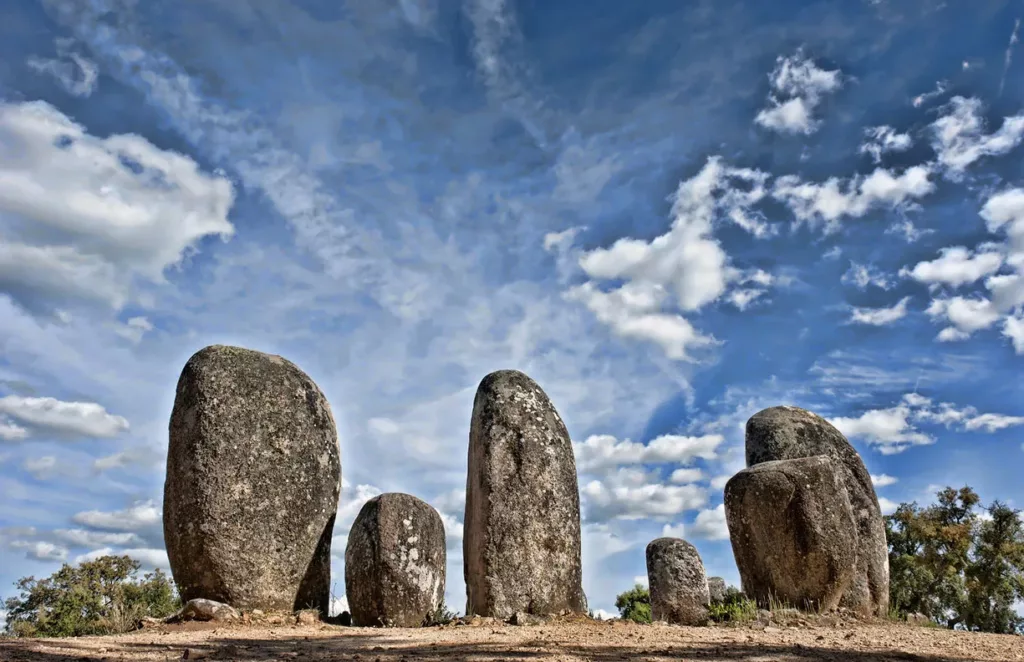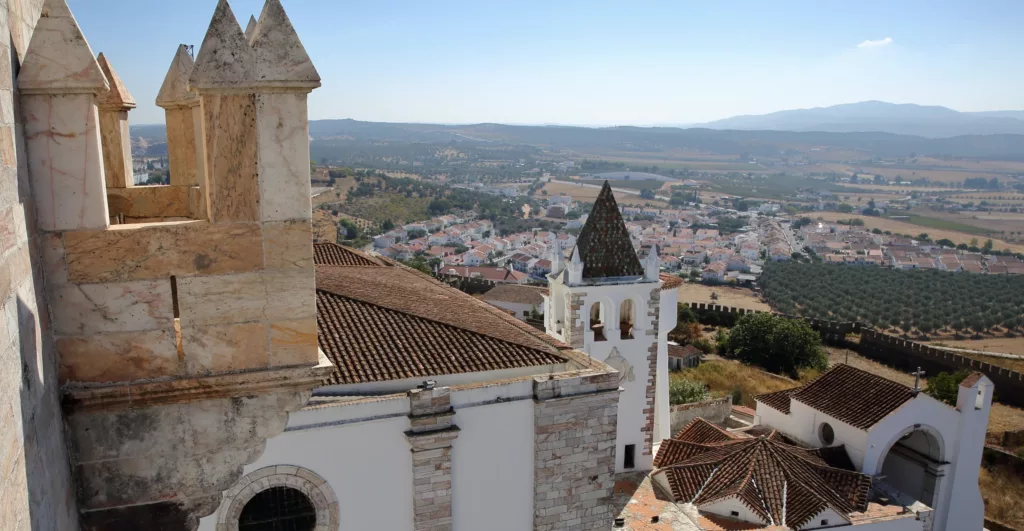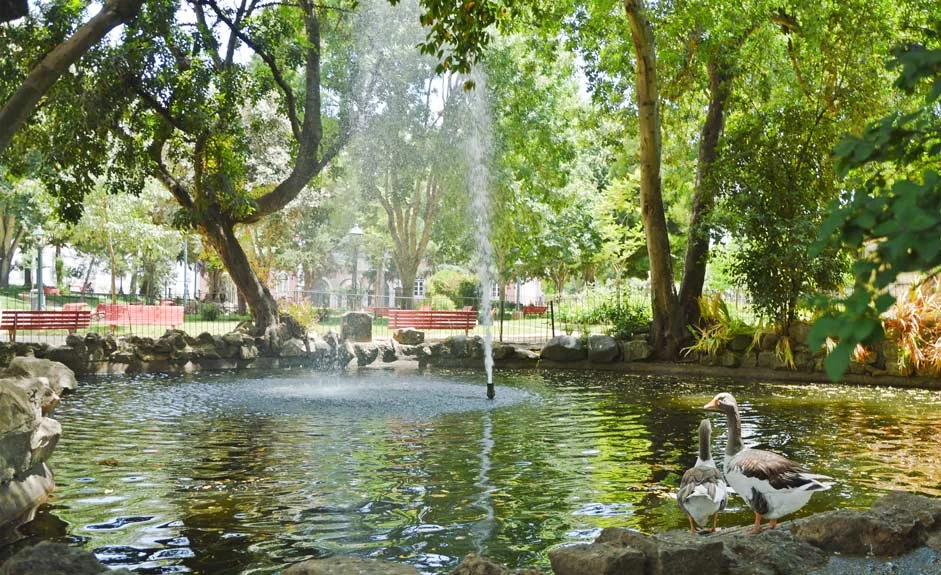As you explore the charming city of Évora in Portugal, you’ll find that it’s steeped in history and culture. From the well-preserved Roman Temple to the Gothic Cathedral, Évora has a lot to offer for history buffs. But it’s not just ancient sites that make this city special. You’ll also find a vibrant food scene, traditional crafts, and local wines that are sure to delight your senses. Whether you’re a solo traveler, a couple, or a family, Évora has something for everyone. In this blog post, we’ll take you on a journey to explore the top tourist attractions in Évora and show you why this city should be on your travel bucket list.
Table of Contents
Getting to Evora, Alentejo Region
If you are driving your own car, there are parking lots located near some of the hotels in the city walls – however, space can be limited so remember to ask before booking your stay. Alternatively, there is also free public parking available which is around fifteen minutes away from the city center.
For those who are traveling from Porto and want a convenient stopover on their way down to the Algarve beaches, Evora makes for an ideal pitstop between these two destinations. Be sure to make the most of your time and get tips for visiting Porto too!
Additionally, for visitors with limited time or those who want to visit but don’t want to stay overnight there, day trips from Lisbon are easily arranged. Trains and buses run daily between Lisbon and Evora with regular timetables – all you need to do is check out their route information online.
Read also: Top 10 Places to Visit in Algarve
Things to do in Evora
Silver Water Aqueduct (Aqueduto de Agua da Prata)
Once you’ve seen the Silver Water Aqueduct in Evora, you won’t want to leave this city! Located just outside of the city center near the main square, it is a sight that has been attracting tourists for decades. Dating back to the 15th century, this prominent structure was built by King Dinis and his son Afonso IV with one goal in mind: to bring water from nearby springs into the city of Evora. It was a feat for its time – two stories tall and composed of arches lined up side by side – but today it still stands as one of Portugal’s most iconic landmarks. Whether you choose to explore it on your own or join a guided tour, there’s something magical about walking beneath the arches of this impressive aqueduct. Don’t miss it when you’re visiting Evora!
The city of Evora is home to many other attractions, such as its UNESCO-listed cathedral and the Roman Temple of Diana. But the city really stands out thanks to the Silver Water Aqueduct – a must-see for any visitor. So make sure you swing by the main square and feast your eyes on this awe-inspiring structure. It’s also a great spot to take photos – there’s no better way to remember your trip to Evora!
Roman Temple of Evora, or Temple of Diana (Templo Romano de Évora)
The Roman Temple of Evora, located in the Portuguese city of Evora, is an ancient temple dedicated to the goddess Diana of the Roman Empire. Built in the first century AD, it is one of the most important monuments from Portugal’s Roman era. The temple was originally constructed as a way for evorans to honor and worship their gods and goddesses. Its construction features classic Roman architecture with several columns surrounding its structure.
Today, visitors can explore this famous landmark and experience what life was like during Ancient Rome’s reign in Evora. Tourists are allowed inside the ancient building where they will find various artifacts that help tell more about this period of time. The temple also serves as a popular gathering spot for locals and tourists alike. With its beautiful surroundings and fascinating artifacts, the Roman Temple of Evora is certainly a must-see for any visitor.
Cathedral of Évora (Sé de Évora)
Evora’s cathedral (or sé) is the largest medieval cathedral in Portugal. Located near the Roman Ruins, the cathedral has massive towers, a cloister, chapels, rose window, and cathedral museum with religious art. Climb up the bell tower spiral steps to a rooftop terrace with views of the surrounding countryside.
Sé de Évora is the largest medieval cathedral in Portugal. It was built between 1186 and 1250 in the Romanesque-Gothic architectural style and is one of the most important religious buildings in Portugal. The cathedral’s walls are decorated with beautiful religious art from the 16th to 18th centuries. Inside, visitors will find an intricately carved altarpiece, stained glass windows, and fresco paintings depicting biblical scenes. Outside, there are two bell towers that can be seen from across town—one dating back to 1490 and another built in 1730.
The cathedral also houses several tombs of prominent figures in Portuguese history. These include the tomb of King Afonso IV, who died in 1279, and his son Pedro I, as well as the tombs of several bishops and commanders from other eras. Today, the cathedral continues to be an important religious site for locals and visitors alike, offering regular religious services as well as guided tours through its many artworks and artifacts.
Igreja de São Francisco & Bone Chapel (Capela dos Ossos)
The Capela dos Ossos, or bone chapel, in Evora is a unique sight to behold. Located near the Church of St. Francis, this small chapel is decorated with more than 5,000 human bones and skulls that line its walls. The Capela dos Ossos was constructed by Franciscan monks back in the 16th century as a reminder of mortality and to emphasize the need for repentance while alive on earth.
Today visitors can explore this macabre monument and ponder its significance. Inside Capela dos Ossos one will find two sets of remains; those from nuns and friars who used to live at the Convento de São Francisco, along with bones from victims of epidemics such as cholera and the plague. These bones were all collected from local cemeteries, including some of which date back to antiquity. Capela dos Ossos is a morbid but fascinating sight and provides insight into the past beliefs and practices of those who lived in Evora centuries ago.
The Capela dos Ossos is open year-round for visitors to explore its unique chamber decorated with human remains. The Capela dos Ossos stands as a reminder that life can be fleeting and should be appreciated while we have it. The experience of visiting this bone chapel may not be for everyone, but it certainly provides an interesting look at a different aspect of history as well as an eerie atmosphere that many don’t soon forget. Visit Capela dos Ossos in Evora for a spooky experience and to gain insight into the past.
Giraldo Square (Praça do Giraldo)
Praça do Giraldo is a vibrant square located in the heart of Evora, Portugal. It has been the main gathering place for locals since medieval times and is often referred to as the “living room” of Evora. The square is surrounded by an array of colorful buildings, including the 16th-century City Hall and 14th-century Igreja de Sao Domingos church. It also features various cafes, restaurants, and shops that line its edges, offering visitors plenty of opportunities to explore the city’s culture through its food and merchandise.
The square is particularly lovely during the summer months when it transforms into a lively outdoor market with vendors selling everything from handmade crafts to traditional snacks like pastel de nata. On special days, locals will gather here to watch Portuguese folkloric groups perform traditional dances and music in the vibrant atmosphere of Praça do Giraldo. If you’re looking for an authentic experience of Evora, this is certainly the place to be.
The square also plays host to a number of annual events throughout the year, including the Feira da Tapada dos Moinhos de Vento festival held on April 1st each year where revelers dressed in traditional costumes take part in various activities such as bull-running or rope pulling. There are also smaller events like concerts, art exhibitions, and theatrical performances that fill up the square during summer months. No matter when you visit Praça do Giraldo, you’re sure to be swept away by its beauty and history, making it the perfect place to spend an afternoon in Evora.
Roman Baths Ruins
The Roman Baths Ruins in Evora are a truly remarkable sight. Located near the city of Evora, these ruins date back to the 2nd century AD and still remain amazingly intact. They mark the site of one of the most important public bathing complexes used by Romans during their occupation of Portugal.
The baths boast a unique set of features that make them stand out from other ancient sites. One such feature is its hexagonal outer walls, which provide an interesting contrast to the elegant inner structures. Within these walls lie numerous chambers including a large central pool, saunas, heated rooms and even cold water plunge pools!
Visitors can explore all these features up close and imagine what life must have been like at this ancient complex over 2000 years ago. Beyond the baths themselves, visitors can also explore the nearby archaeological museum, which houses artifacts found during excavations at the site. The Roman Baths Ruins in Evora is a must-see destination for those looking to experience Portugal’s rich history and culture.
Evora University (Universidade de Évora, Colégio do Espírito Santo)
Evora University de Évora (UE) is the oldest educational institution in Portugal, dating back to 1290 when it was founded by King Dinis. Located in the city of Evora, UE has been a hub of learning and academic excellence for centuries. Today, it is home to several faculties including Law, Medicine, Pharmacy and Humanities & Social Sciences.
The university’s main building is located on Espírito Santo Square, where many other historical buildings can be found. The campus-like environment provides plenty of outdoor activities such as walking tours around the old city walls or wandering through the cobblestone streets that wind between its 23 different courtyards.
It’s also an ideal place to grab a bite to eat or take a leisurely stroll and admire the university’s architecture. UE de Évora is a great destination for history buffs, as it offers plenty of opportunities to explore Portuguese culture and learn about its fascinating past. Indeed, this venerable institution has played an integral role in shaping Portugal and continues to do so today.
Museu de Évora (Evora Museum)
The Évora Museum is a modern and kid-friendly cultural and educational attraction set in the heart of the city. Dating back to the 16th century, it was once the residence of bishops and noblemen, with an impressive collection of regional treasures. One extraordinary example is a 16th-century Flemish polyptych: a 13 panel painting executed in vivid Technicolor that demands serious contemplation. The main core of the museum is its archaeology section, featuring a giant 2nd century AD column that stands tall like a beacon of history.
Just across the square from the musuem lies the Centro de Arte E Cultura, inside what used to be the Inquisition Palace. This grand old building has been beautifully restored and now houses rotating exhibitions by national and international artists – all free to enter! A visit to either site offers a wonderful opportunity (and much needed break from intense summer heat!)to explore Évora’s rich cultural heritage and browse stunning artwork, as well as take advantage of onsite amenities such as restrooms.
Palácio dos Duques de Cadaval
The grand-sounding Palace of the Dukes of Cadaval, built during the 14th century, is an impressive testament to the city’s long-lost castle. Its castellated walls and towers serve as a reminder of its fortified past. Still a private residence, some of its rooms have been opened up to the public, where visitors can explore valuable family heirlooms that date back centuries. From 15th-century illuminated manuscripts and 16th-century suits of armor to 17th and 18th-century paintings and sculptures, there is much to admire in this stunning collection.
Be sure to take your time exploring the palace grounds as well. The spooky Torre das Cinco Quinas (Tower of Five Shields) is said to be haunted by mysterious apparitions from centuries past. A visit here promises thrilling ghost hunting experiences like no other! The café in the gardens offers a much needed respite from all that excitement – perfect for those who seek a more relaxed experience.
Largo da Porta de Moura
Largo da Porta de Moura is one of the most iconic attractions in Evora, Portugal. As a gateway to the city’s western approaches, it is steeped in cultural heritage dating back to the Moors’ occupation of Évora. While only vestiges remain today, travelers can still admire the charming Renaissance fountain located at its center.
Built in 1556 and featuring a majestic marble sphere as its centerpiece, this fountain has managed to remain remarkably well-preserved despite being situated in the middle of a busy street. Visitors can take advantage of the little cafés that line either side of this square for an impromptu coffee break – or return at night when it is lit up by spotlights and creates a magical atmosphere.
Steeped in history, Largo da Porta de Moura serves as an integral part of Evora’s cultural identity and is an absolute must-see for anyone visiting Portugal’s Alentejo region. Its picturesque setting makes it perfect for capturing stunning photographs or simply admiring its beauty – something that many have done since it was first constructed over 400 years ago.
Megaliths Tour
The Cromeleque dos Almendres (Cromlech of Almendres) is an isolated megalithic site located about 15 kilometers west of Évora. This fascinating oval-shaped site consists of 95 lichen-encrusted granite stones that are estimated to date back between 4000 and 2000 BC. It is believed that this mysterious site was once a temple dedicated to a solar cult, while some archaeologists also claim that it may have served as an ancient astronomical observatory.
Adding further mystery to the area is the Menhir of Almendres, a two-and-a-half-meter high standing stone positioned one and a half kilometers away from the cromlech. The two sites are connected by a pedestrian trail which passes through an olive grove, allowing visitors to take in the impressive sights at their own pace. For those interested in learning more about this ancient destination, guided tours led by local experts are available offering more insight into the mysterious origins and purpose of these megaliths.
Young adventurers will likely find plenty of fun searching for clues among the standing stones, while for those seeking something more spiritual this incredible location offers an opportunity to connect with our distant past.
Arraiolos-Estremoz Circuit
Arraiolos-Estremoz Circuit is an incredible circular tour of the beautiful countryside of Évora in Portugal.
Sandwiched between two stunning towns, Arraiolos and Estremoz, this circuit will take you through some of Portugal’s most spectacular sights. Kicking off in Arraiolos, 23 kilometers northwest from Évora, you will find yourself surrounded by stunning ruins of a 14th century castle: the walls of Igreja do Salvador are whitewashed and incredibly picturesque. This fortified village gives its visitors a wonderful view over the surrounding landscape.
But what really makes Arraiolos so special is its tradition in needlecrafts. Carpet weaving is a craft that has been practiced here since the 13th century, and it’s easy to see why: their hand-embroidered carpets are some of the finest in all Portugal – they are made by teams of women who craft intricate designs over several months, resulting in beautiful tapestries that can be enjoyed both as wall hangings or floor coverings. The best examples can be found in various shops along the main street.
The circuit then takes us east to Estremoz – famed for its marble which adorns much of the town. Here you will find yourself with another breathtaking view at the 13th century castle that was once home to King Dinis and Queen Isabel; visitors can admire a statue of her on the terrace or climb up to atop the keep for unbeatable panoramic vistas. For those interested in local culture and artifacts, there is also a Municipal Museum with collections including antique furniture, pottery and ecclesiastical art.
Shoppers should also make sure not to miss out on Rossio Marquês de Pombal – Estremoz’ main square – where every Saturday hosts one of Portugal’s biggest markets selling delicious local cheeses and pottery items.
This circuit is an absolute must during your stay in Évora; it combines natural beauty with manmade monuments and cultural heritage into one epic trip!
Jardim Público (Public Gardens)
Jardim Público (Public Gardens) is the ideal place to escape from the bustling streets of Evora and enjoy a gentle stroll. Nestled within the ancient walls of Palácio de Dom Manuel, the gardens have been a tranquil sanctuary for centuries. The only remaining relic of this once-opulent palace is the exquisite Galeria das Damas, an awning built by Manuel I in the 15th century.
The gardens come alive in early spring, as an array of vibrant flowers line the lawns and park benches become sought-after spots to soak up some rays. On weekends, families flock here to spend quality time together and will often wait in line for their turn at one of the outdoor cafe tables, which are scattered throughout the light-dappled terrace.
The Jardim Público also hosts regular activities and events throughout the year such as art exhibitions, film screenings and music festivals. Visitors can also take part in guided tours with local historians who provide fascinating facts and insights into this cultural hotspot’s past. With its diverse range of activities, stunning scenery and relaxed atmosphere, it’s no wonder that the Public Gardens remain one of Evora’s top attractions.
Evora, Portugal FAQ
What is Evora Portugal known for?
Evora, Portugal is a city known for its history. It’s one of the oldest in Portugal and has some incredible architecture, including a well-preserved Roman Temple and aqueduct. Evora is also known for its beautiful landscapes, with rolling hills, vineyards, and stunning views.
Why is it important to visit Evora?
Visiting Evora is important because it’s a beautiful and historic city that offers a lot of interesting sights. It’s one of Portugal’s oldest cities, with some structures dating back to Roman times. There are many fascinating monuments and sites, such as the Cathedral of Évora, the Giraldo Square, the University of Évora, and the Chapel of Bones.
Is one day enough in Evora?
One day is barely enough to get a taste of everything Evora has to offer. However, if you prioritize your sightseeing, you can make the most out of your time and visit some of the top attractions in town such as the Roman Temple and Old Cathedral.
What does the name Evora mean?
The name likely comes from a combination of the Latin phrase “ad herbam” translating to “at the grass,” and its variations, which allude to the location’s verdant countryside. Its meaning may also be interpreted as “green hill.”
Do you need a car in Evora?
No, you don’t need a car in Evora. The city is small and easy to navigate on foot or by bike. There are also good public transport links that can get you around the city quickly and cheaply. If you’re planning to explore beyond the city limits then having a car might be more convenient, but it’s not essential.
